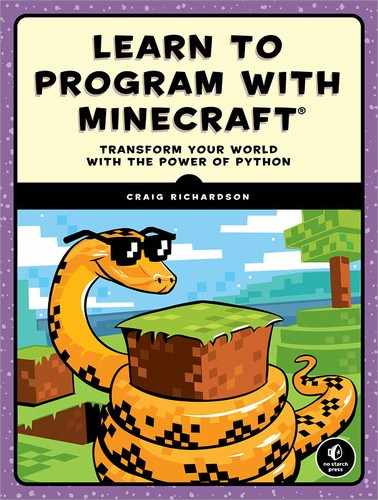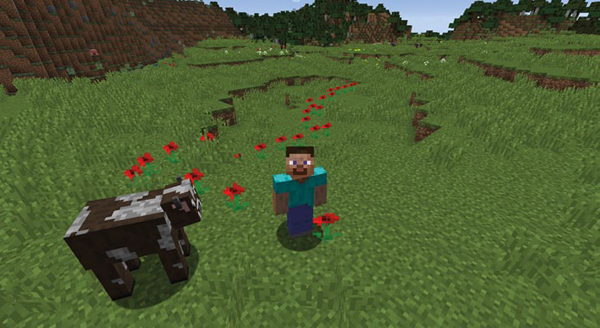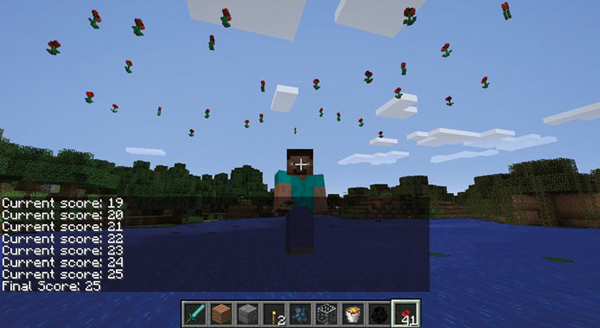7
DANCE PARTIES AND FLOWER PARADES WITH WHILE LOOPS

Loops make it easy to repeat code again and again. Instead of copying and pasting the same code, you can use a loop to repeat the code as many times as you want. You’ll use loops in this chapter to make your programs repeat without having to rerun them. We’ll focus on one type of Python loop known as the while loop.
A SIMPLE WHILE LOOP
You use while loops to repeat blocks of code. Similar to if statements, a while loop will execute the code inside it as long as a condition is True. That is, a condition must be met in order for the body of the statement to run.
The difference between a while loop and an if statement is that the code in the if statement executes only once at the most, whereas the code in the while loop can repeat many times. Programmers call the repeating of code iteration. When a loop repeats, you say it iterates.
For example, this code uses a while loop to print the numbers 1 to 5:
count = 1
while count <= 5:
print(count)
count += 1
print("Loop finished")
The count variable records the number of times that the loop has repeated. It starts with the value of 1. The condition in the while loop checks whether the count is less than or equal to 5.
NOTE
In Chapter 3 you learned that += is a shorthand operator. You could use the standard addition operator count = count + 1 to do the same thing.
The first time the loop runs, the value of count is 1, which is less than 5. The condition of the loop is True, and the body of the loop runs. Next, the program prints the value of count to the Python shell, and then it adds 1 to the value of count. The while loop now starts again and checks the condition again, going through each step until the count variable is greater than 5.
Outside the loop is one final line, which prints "Loop finished".
Save this program and run it; you should see the following output:
1
2
3
4
5
Loop finished
Try experimenting a bit with the code. Change the conditions so you list more than 5 numbers or change the amount by which the count variable increases. Here’s a refresher on how the code works. The while statement follows these steps:
Check whether the condition is True.
If the condition is True:
a. Execute the body of code.
b. Repeat step 1.
If the condition is False:
a. Ignore the body of code.
Continue to the line after the while loop block.
Let’s try using a while loop in Minecraft to teleport to lots of new places!
MISSION #33: A RANDOM TELEPORTATION TOUR
In Mission #3 (page 40), you teleported the player to different positions in the game. Let’s rewrite that program using a while loop so you can repeat the teleportation again and again.
By looping some code that will teleport the player to a random location, you can make the program more powerful and a lot easier to read. Cool, huh?
The following code will teleport the player to a random location once by picking random values in the game world for the variables x, y, and z. Then it will set the player’s position using those variables.
import random
from mcpi.minecraft import Minecraft
mc = Minecraft.create()
➊ # Add the count variable here
➋ # Start the while loop here
➌ x = random.randint(-127, 127) # Indent the code from this line
y = random.randint(0, 64)
z = random.randint(-127, 127)
mc.player.setTilePos(x, y, z)
➍ # Add 1 to the value of the count variable here
Right now, however, the code will only teleport the player once. Although that’s pretty cool, you can make it totally awesome. Let’s write a loop so the code repeats five times, making this quite a whirlwind tour.
To change the code to use a loop, follow these four steps:
Create a count variable to control the loop ➊.
Add a while loop with a condition based on count ➋.
Indent the body of the while statement ➌.
Increment the value of count with each loop ➍.
The purpose of the count variable and the count increment is to keep track of the number of times the loop has repeated. I’ll talk more about them in the next section. For now, all you need to know is that count lets us control how many times this code repeats.
Listing 7-1 shows the code with the changes added.
randomTeleport.py
import random
from mcpi.minecraft import Minecraft
mc = Minecraft.create()
count = 0
while count < 5:
x = random.randint(-127, 127)
y = random.randint(0, 64)
z = random.randint(-127, 127)
mc.player.setTilePos(x, y, z)
count += 1
Listing 7-1: Code to randomly teleport the player around the game world
Copy Listing 7-1 into a new file, save it as randomTeleport.py in a new folder called whileLoops, and run the code. You should see the player zip around the Minecraft world. But the code runs far too quickly! The entire journey is over in less than a second. Let’s fix that together.
You’ll use the time module to slow down the code. Follow these steps:
On the first line of the program, add the statement import time. This imports Python’s time module, which contains a set of handy functions related to timing and more.
Add the line time.sleep(10) at the end of the body of your while loop to add a delay of 10 seconds to your program. Make sure you indent this new final line of your program so it’s within the while loop!
Save the program and run it. Now the player should teleport to a new random location every 10 seconds. Figure 7-1 shows my program running.
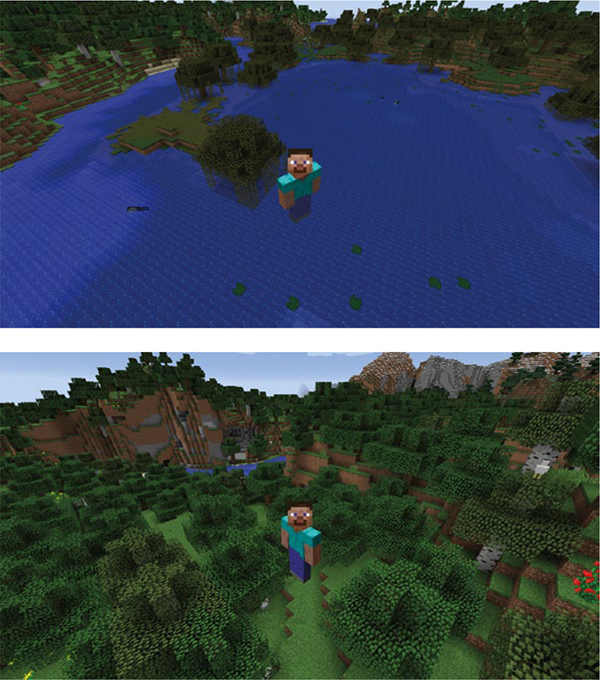
Figure 7-1: Every 10 seconds, the program teleports me to a new location.
CONTROLLING LOOPS WITH A COUNT VARIABLE
Count variables are a common way of storing the number of times a program has repeated. You’ve seen these variables in action a few times now. Let’s look at another example:
count = 0
while count < 5:
print(count)
count += 1
The while loop’s condition tests that the value of the count variable is less than 5. In the body of the loop, I’ve changed the value of the count variable to record the number of times the count has repeated. Adding to the value of a count variable is called incrementing.
The last line of this code increases the value of the count variable by 1. Each time the code repeats, it will check the new value of the count variable to see whether it is less than 5. When it is equal to or greater than 5, the loop will stop.
If you forget to increment the count variable, you’ll end up with an infinite loop, which will repeat the loop forever, as shown in the following example:
count = 0
while count < 5:
print(count)
The value of count is always 0 because it’s never incremented. So, the condition of the loop will always be True, and the loop will repeat forever. If you don’t believe me, try running the code!
0
0
0
0
0
--snip--
To break the execution of this infinite program, press CTRL-C. To correct the code, just add the line count += 1 to the loop’s body. Now you won’t get trapped in an infinite loop. Phew!
Counts don’t always have to be incremented by 1. In some situations you may want to increment the count by a different value. In the following example, the count is incremented by 2 every time; the result is that the code prints all the even numbers between 0 and 100:
count = 0
while count < 100:
print(count)
count += 2
You can also count backward using a negative number to decrement the value of the count. The following code counts down from 100 to 1:
count = 100
while count > 0:
print(count)
count -= 1
The only difference between this example and the previous examples is the condition. Here I’ve used a greater than comparator (>). As long as the count is greater than 0, the loop continues; when the count reaches 0, the loop stops.
NOTE
The variable used to control a loop isn’t always called count. You could call it repeats or anything else you want. If you look at other people’s code, you will see a huge range of different names.
MISSION #34: THE WATERY CURSE
Let’s try something a bit nasty and write a curse for the player that lasts for just a short time. Curses in video games might debuff the character in some way, such as slowing them down or making them weaker, often for just a little while.
We’ll create a curse program that places a flowing water block at the player’s position once a second for 30 seconds. This will make it difficult for the player to move without being pushed around by flowing water.
The following code places a flowing water block at the player’s position:
waterCurse.py
from mcpi.minecraft import Minecraft
mc = Minecraft.create()
pos = mc.player.getPos()
mc.setBlock(pos.x, pos.y, pos.z, 8)
This code will place a water block at the player’s current position only once. It is your task to make it repeat. The final code should repeat 30 times, and each iteration of the loop should last 1 second.
Save this code as waterCurse.py in the whileLoops folder and run it once to make sure it works. You should see a single water block appear at the player’s position before the program stops.
Let’s talk through what to add next to make this curse last. Use what you learned about while loops and count variables to do the following:
Add a count variable to the program.
Add a loop to the program to repeat the last two lines of code. The loop should repeat 30 times.
Increment the count variable at the end of the loop.
Import the time module (on the first line of your program) and then add a 1 second sleep on the last line of the while loop.
Save the program and test it. As you walk around the game world, the program should create one block of water every second for 30 seconds. If you get stuck, go back to the steps in Mission #33 (page 125) for help.
Figure 7-2 shows the curse in action.

Figure 7-2: Oh no! I’m being followed by a small flood.
INFINITE WHILE LOOPS
In most cases, it is very important that the Boolean condition in your while loop eventually become False; otherwise, the loop will iterate forever, and your computer might crash.
But there are times when you may want to program an infinite loop. For example, video games often use an infinite loop to check for user input and manage player movement. Of course, these video games include a Quit button so you can pause or stop the infinite loops when you need to take a break!
A simple way to create an infinite loop is to use a True condition when you define a while loop, as shown here:
while True:
print("Hello")
This code will repeat forever, printing the string "Hello" over and over again. Whether or not you meant to create an infinite loop, pressing CTRL-C in the Python shell is a common way to stop it. In IDLE you can select Shell ▸ Restart Shell to stop the loop as well.
Note that any code that is placed after an infinite while loop will never run. In the following example, the last line of code is unreachable due to the infinite while loop that comes before it:
while True:
print("Hello")
print("This line is never reached")
Although infinite loops can sometimes be tricky, you can also create them to do lots of cool things. Let’s try this next!
MISSION #35: FLOWER TRAIL
The program you’ll write in this mission is like the one in Mission #34, but instead of placing water blocks, you’ll create a trail of flowers behind the player. Flowers are much nicer than floods!
Open the file waterCurse.py in the whileLoops folder and then save it as flowerTrail.py.
To make an infinite trail of flowers appear as the player walks around the game, make the following changes to the program:
Change the condition of the while loop to True.
Delete the count variable and the increment.
Change the block type argument in the setBlock() function from 8 to 38.
Reduce the value of the argument in the sleep() function to 0.2 to make five flowers appear every second.
Save the program and run it. Figure 7-3 shows what you should see.
Figure 7-3: Look at all the beautiful flowers!
FANCY CONDITIONS
Because while loops expect a Boolean value for their condition, you can use any of the comparators and Boolean operators that you’ve learned about so far. For instance, you’ve already seen that the greater than and less than operators work just like they did in earlier chapters.
But you can control while loops with comparators and Boolean operators in other ways as well. Let’s take a look!
We’ll start by writing a more interactive condition. The following code creates the continueAnswer variable before the loop starts and checks that the value is equal to "Y". Note that we can’t use the word continue as a variable name because it is a reserved word in Python.
continueAnswer = "Y"
coins = 0
while continueAnswer == "Y":
coins = coins + 1
continueAnswer = input("Continue? Y/N")
print("You have " + str(coins) + " coins")
In the last line of the while loop, the program asks for input from the user. If the user presses anything besides "Y" in response, the loop will exit. The user can repeatedly press Y and Y and Y, and each time the value of the coins variable will increase by 1.
Notice that the variable being checked, continueAnswer, is created before the loop starts. If it wasn’t, the program would display an error. That’s why the variable we use to test the condition must exist before we try to use it, and it must be True when the program reaches the while loop the first time; otherwise, the condition won’t be met, and the while loop’s body statement will never execute.
MISSION #36: DIVING CONTEST
Let’s have some fun with while loops and the equal to (==) comparator. In this mission, you’ll create a mini-game in which the player dives underwater for as long as they can. The program will record how many seconds they stay underwater and display their score at the end of the program. To congratulate the player, the program will shower them with flowers if they stay underwater longer than 6 seconds.
Here is some code to get you started:
divingContest.py
from mcpi.minecraft import Minecraft
mc = Minecraft.create()
import time
score = 0
pos = mc.player.getPos()
➊ blockAbove = mc.getBlock(pos.x, pos.y + 2, pos.z)
➋ # Add a while loop here
time.sleep(1)
pos = mc.player.getPos()
➌ blockAbove = mc.getBlock(pos.x, pos.y + 2, pos.z)
➍ score = score + 1
mc.postToChat("Current score: " + str(score))
mc.postToChat("Final score: " + str(score))
➎ if score > 6:
finalPos = mc.player.getTilePos()
mc.setBlocks(finalPos.x - 5, finalPos.y + 10, finalPos.z - 5,
finalPos.x + 5, finalPos.y + 10, finalPos.z + 5, 38)
Save the program as divingContest.py in your whileLoops folder. The score variable keeps track of how many seconds the player is underwater.
Run the code to see what happens. At the moment, the program isn’t complete: it only checks whether the player is underwater once and then finishes.
Before you fix this, let’s look at what the rest of the code does. The blockAbove variable stores the type of the block located at the player’s head ➊. For example, if the player’s head is underwater, this variable will store a value of 8 (which means the block is water). Later in the code, you’ll set blockAbove to store the value of the block above the player’s head again ➌ so when you create your while loop, it will update blockAbove to the current block above the player’s head. At ➍, the program adds 1 point to the total for every second the player is underwater, and at ➎, it uses an if statement to create a shower of flowers above the player if the score is greater than 6.
It’s up to you to add a loop to the program that uses the blockAbove variable as a condition at ➋. Make the while loop check whether blockAbove is equal to water (block type 8) or equal to flowing water (block type 9). You can use the following condition in the while loop to check this: while blockAbove == 8 or blockAbove == 9. This checks whether the player is currently underwater and will continue to check whether the player is underwater every time the loop repeats.
To test your program, find some water that’s at least three blocks deep and dive into it. The program will run only if you’re already underwater. When you run the program, it should start displaying how many seconds you’ve been underwater. After a while, swim to the surface. The program should display your score and shower you with flowers if you were underwater for 6 seconds or more. Figure 7-4 shows the player underwater and the score being displayed. Figure 7-5 shows the flowers that appear when you win.
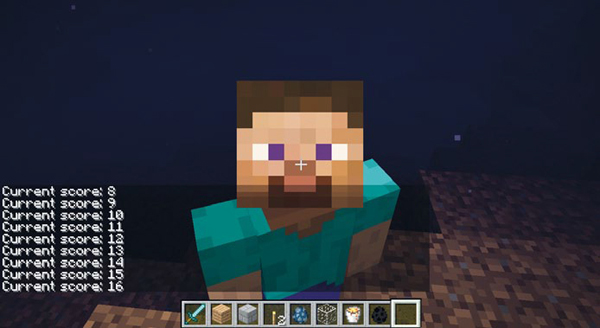
Figure 7-4: I’m holding my breath underwater, and the number of seconds I’ve been underwater is displayed.
Figure 7-5: I won my very own flowery celebration!
BOOLEAN OPERATORS AND WHILE LOOPS
You can use Boolean operators like and, or, and not with a while loop when you want the loop to use more than one condition. For example, the following loop will iterate while the user has not input the correct password and has made three attempts or fewer:
password = "cats"
passwordInput = input("Please enter the password: ")
attempts = 0
➊ while password != passwordInput and attempts < 3:
➋ attempts += 1
➌ passwordInput = input("Incorrect. Please enter the password: ")
➍ if password == passwordInput:
print("Password accepted.")
The while loop condition ➊ does two tasks: it checks whether the password is different from the user’s input (password != passwordInput) and checks whether the user has tried to enter the password three times or less (attempts < 3). The and operator allows the while loop to check both conditions at the same time. If the condition is False, the loop increments the attempts variable ➋ and asks the user to reenter the password ➌. The loop will finish if the user enters the correct password or the attempts variable is greater than 3. After the loop finishes, the program will output Password accepted only if the user entered the correct password ➍.
CHECKING A RANGE OF VALUES IN WHILE LOOPS
You can also check for values in a certain range using a while loop. For example, the following code checks whether the value the user has entered is between 0 and 10. If it is not, the loop will exit.
position = 0
➊ while 0 <= position <= 10:
position = int(input("Enter your position 0-10: "))
print(position)
If the position variable is greater than 10, the loop won’t repeat ➊. The same will happen if the value is less than 0. This is useful in Minecraft when you’re checking whether the player’s position is in a certain area in the game, as you’ll see in the next mission.
MISSION #37: MAKE A DANCE FLOOR
It’s time to dance! But before you can bust out some sweet moves, you’ll need a dance floor. The program in this mission will generate a dance floor that flashes different colors every half second as long as the player stays on the floor.
The following is the start of the code. It creates a dance floor at the player’s current position and uses an if statement to change colors. But the code is not complete.
danceFloor.py
from mcpi.minecraft import Minecraft
mc = Minecraft.create()
import time
pos = mc.player.getTilePos()
floorX = pos.x – 2
floorY = pos.y - 1
floorZ = pos.z – 2
width = 5
length = 5
block = 41
➊ mc.setBlocks(floorX, floorY, floorZ,
floorX + width, floorY, floorZ + length, block)
➋ while floorX <= pos.x <= floorX + width and # Check z is within the floor
➌ if block == 41:
block = 57
else:
block = 41
mc.setBlocks(floorX, floorY, floorZ,
floorX + width, floorY, floorZ + length, block)
pos = mc.player.getTilePos()
time.sleep(0.5)
Open IDLE, create a new file, and save the program as danceFloor.py in the whileLoops folder. The code builds the dance floor based on the player’s current position ➊ and stores the dance floor’s location and size in the floorX, floorY, floorZ, width, and length variables. Inside the while loop, the code uses an if statement to alternate the blocks that the dance floor is made of ➌, making the dance floor look like it’s flashing.
To get the program to work properly, you need to change the while loop’s condition to check whether the player’s z-coordinate is on the dance floor ➋. In other words, check whether pos.z is greater than or equal to floorZ and less than or equal to floorZ plus length. For guidance, look at how I checked whether pos.x is on the dance floor by using (floorX <= pos.x <= floorX + width). Figure 7-6 shows the dance floor in action!
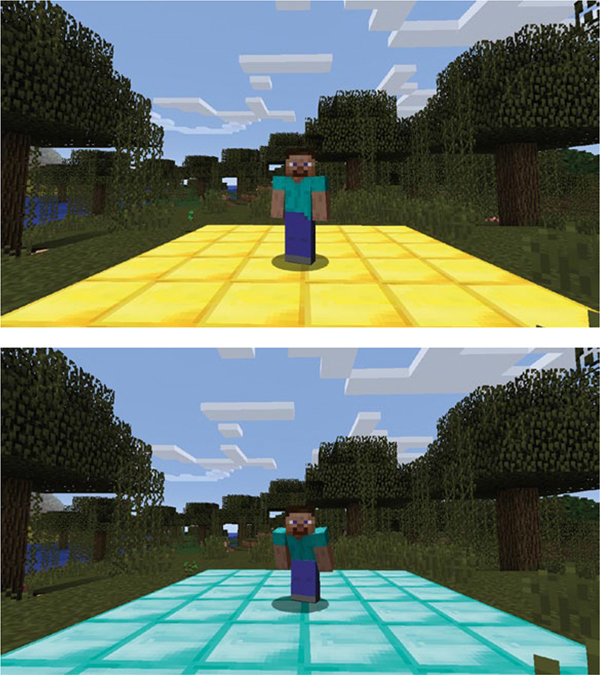
Figure 7-6: I’m showing off my moves on the dance floor.
When you’ve completed the program, save it and run it. A dance floor should appear below the player and change every half second. Dance around a bit—have some fun! When you’re done, leave the dance floor and make sure it stops flashing. It won’t switch on again unless you run the program again to create a new dance floor.
NESTED IF STATEMENTS AND WHILE LOOPS
You can write more powerful programs by using if statements and nested if statements inside while loops. You may have noticed a nested if statement in the code in Mission #37 (page 135).
In the following example, the nested if statement checks the last word that was printed and decides whether to print the words "mine" and "craft". The loop repeats 50 times.
word = "mine"
count = 0
while count < 50:
print(word)
if word == "mine":
word = "craft"
else:
word = "mine"
The word variable stores the first word that will be printed. The if statement in the loop checks whether the current word is "mine" and, if it is, changes the word to "craft" and prints it on the next iteration of the loop. If the word isn’t "mine", it will be changed to "mine". This is an infinite loop, so be sure to use CTRL-C to escape!
You can also nest elif statements and other while loops inside while loops.
The following program asks the user if they want to print all the numbers between one and a million:
userAnswer = input("Print the numbers between 1 and 1000000? (yes/no): ")
➊ if userAnswer = "yes":
count = 1
➋ while count <= 1000000:
print(count)
count += 1
The if statement checks whether the user’s input is yes ➊. If it is, the program runs the loop that is nested in the if statement ➋. If the input is anything else, the program won’t run the loop and will finish.
MISSION #38: THE MIDAS TOUCH
Midas is a king of legend. Everything he touched turned to gold. Your mission is to write a program that changes every block below the player to gold—except for air and water, of course, or you’d be in real trouble! Recall that the gold block has a value of 41, still water is 9, and air is 0.
midas.py
from mcpi.minecraft import Minecraft
mc = Minecraft.create()
air = 0
water = 9
➊ # Add an infinite while loop here
pos = mc.player.getTilePos()
blockBelow = mc.getBlock(pos.x, pos.y - 1, pos.z)
➋ # Add if statement here
mc.setBlock(pos.x, pos.y - 1, pos.z, 41)
Open IDLE and create a new file. Save the file as midas.py in the whileLoops folder. You need to add a bit more to the program so it can do what you need it to do. First, you’ll add an infinite while loop ➊. Remember that an infinite while loop has a condition that is always True. You also need to add an if statement that checks whether the block below the player is not equal to air and not equal to still water ➋. The value of the block below the player is stored in the blockBelow variable, and the values for air and water are stored in the air and water variables.
When you’ve completed the program, save it and run it. The player should leave a trail of gold behind them. When you jump in water or fly in the air, the blocks below you should not change. Figure 7-7 shows the program in action.
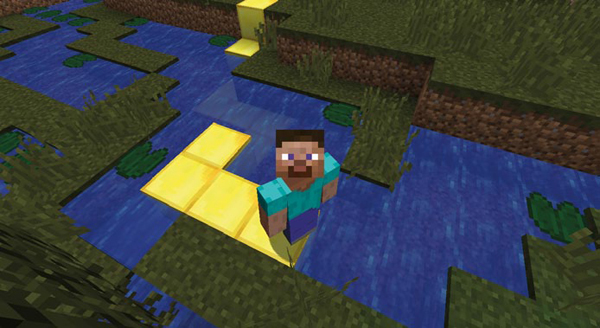
Figure 7-7: Every block I walk on turns to gold.
To exit the infinite loop, go to Shell ▸ Restart Shell in your IDLE shell or click in the shell and press CTRL-C.
ENDING A WHILE LOOP WITH BREAK
With while loops, you have complete control over how and when the loop ends. So far you’ve only used conditions to end loops, but you can also use a break statement. The break statement lets your code immediately exit a while loop. Let’s look at this concept!
One way to use break statements is to put them in an if statement nested in the loop. Doing so immediately stops the loop when the if statement’s condition is True. The following code continually asks for user input until they type "exit":
➊ while True:
➋ userInput = input("Enter a command: ")
➌ if userInput == "exit":
➍ break
print(userInput)
➎ print("Loop exited")
This is an infinite loop because it uses while True ➊. Each time the loop repeats, it asks for the user to enter a command ➋. The program checks whether the input is "exit" ➌ using an if statement. If the input meets the condition, the break statement stops the loop from repeating ➍, and the program continues on the line immediately after the body of the loop, printing "Loop exited" to the Python shell ➎.
MISSION #39: CREATE A PERSISTENT CHAT WITH A LOOP
In Mission #13 (page 72), you created a program that posts the user’s message to chat using strings, input, and output. Although this program was useful, it was quite limited because you had to rerun the program every time you wanted to post a new message.
In this mission, you’ll improve your chat program using a while loop so users can post as many messages as they want without restarting the program.
Open the userChat.py file in the strings folder and then save it as chatLoop.py in the whileLoops folder.
To post a new message every time you want to without rerunning the program, add the following to your code:
Add an infinite while loop to the program.
Add an if statement to the loop to check whether the user’s input is "exit". If the input is "exit", the loop should break.
Make sure the userName variable is defined before the start of the loop.
When you’ve added the changes, save your program and run it. A prompt in the Python shell will ask you to type in a username. Do this and press ENTER. The program will then ask you to enter a message. Type a message and then press ENTER. The program will keep asking you to enter a message until you type exit. Figure 7-8 shows my chat program running.

Figure 7-8: I’m chatting with myself.
WHILE-ELSE STATEMENTS
Like an if statement, while loops can have secondary conditions triggered by else statements.
The else statement executes when the condition of a while statement is False. Unlike the body of a while statement, the else statement will execute only once, as shown here:
message = input("Please enter a message.")
while message != "exit":
print(message)
message = input("Please enter a message.")
else:
print("User has left the chat.")
This loop repeats as long as the message entered is not equal to "exit". If the message is "exit", the loop will stop repeating, and the body of the else statement will print "User has left the chat."
If you use a break statement in the while statement, the else isn’t executed. The following code is similar to the preceding example but includes a nested if statement and a break statement. When the user types abort instead of exit, the chat loop will exit without printing the "User has left the chat." message to the chat.
message = input("Please enter a message.")
while message != "exit":
print(message)
message = input("Please enter a message.")
if message == "abort":
break
else:
print("User has left the chat.")
The if statement checks whether the message entered is "abort". If this is True, the break statement runs and the loop will exit. Because the break statement was used, the body of the else statement will not run, and "User has left the chat." will not be printed.
MISSION #40: HOT AND COLD
In this mission, we’ll create a Hot and Cold game in Minecraft. If you’ve never played, the idea is that your friend hides an object and you have to find it. Your friend gives you hints based on how far away from the object you are. If you’re close, your friend says “Hot,” and if you’re far away, they’ll say “Cold.” When you’re right next to the object, they’ll say “You’re on fire!” and if you’re very far away, they’ll say “Freezing!”
The object of the game is to find and stand on the diamond block that has been placed randomly in the game world. In this version of the game, you’ll play by yourself, and the Python program will tell you how far away from the hidden block you are. The game ends when you stand on the diamond block.
Listing 7-2 places a block in a random location.
blockHunter.py
from mcpi.minecraft import Minecraft
import math
import time
import random
mc = Minecraft.create()
destX = random.randint(-127, 127)
destZ = random.randint(-127, 127)
➊ destY = mc.getHeight(destX, destZ)
block = 57
➋ mc.setBlock(destX, destY, destZ, block)
mc.postToChat("Block set")
while True:
pos = mc.player.getPos()
➌ distance = math.sqrt((pos.x - destX) ** 2 + (pos.z - destZ) ** 2)
➍ if distance > 100:
mc.postToChat("Freezing")
elif distance > 50:
mc.postToChat("Cold")
elif distance > 25:
mc.postToChat("Warm")
elif distance > 12:
mc.postToChat("Boiling")
elif distance > 6:
mc.postToChat("On fire!")
elif distance == 0:
➎ mc.postToChat("Found it")
Listing 7-2: The start of the Hot and Cold program
Before randomly placing a block, the program makes sure that the block won’t be placed underground. To do so, it uses the getHeight() function ➊, which finds the block that is the highest y-coordinate (that is, on the surface) for any position in the game. Then it places a diamond block at a random position ➋.
The code at ➌ calculates the distance to the diamond block. It uses the sqrt() function, which is in the math module—this is why import math is needed at the beginning of the program. The sqrt() function calculates the square root of a number.
Listing 7-2 uses a formula called the Pythagorean theorem. The formula uses two sides of a triangle to calculate the length of the third. In this case, I use the distance from the player to the hidden block on the x-axis and the z-axis to calculate the distance to the hidden block in a straight line.
The message that the program displays depends on how far away you are from the block, which you can find out using an if statement and the distance variable ➍. The program displays "Freezing" if you’re very far away and "On fire!" if you’re very close.
Copy Listing 7-2 into a new file in IDLE and save the program as blockHunter.py in the whileLoops folder.
At the moment the program works, but it doesn’t end when you find the block. To finish the code, you need to add a break statement when the player’s distance from the block is 0 ➎.
When you’ve completed the program, save it and run it. A random block will be generated, and you’ll need to find it. The program should stop when you find the block and stand on it. Figure 7-9 shows that I’ve just found the block.
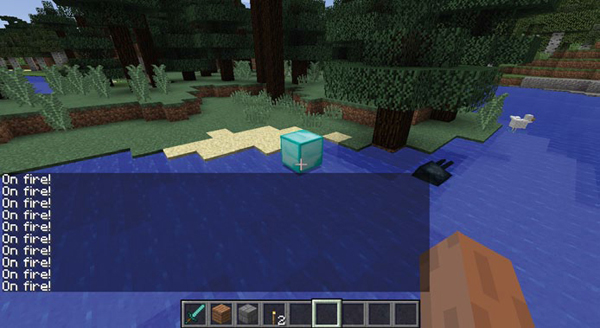
Figure 7-9: I’ve found the block, and now I just need to stand on it.
WHAT YOU LEARNED
Well done! You’ve learned a lot about while loops. You can create while loops and infinite while loops, and you can use loops with conditions and Boolean operators. Using loops, you can now write programs that repeat code, which will save you lots of time so you can focus on mastering Minecraft. In Chapter 8, you’ll learn another way to make reusable code using functions.
